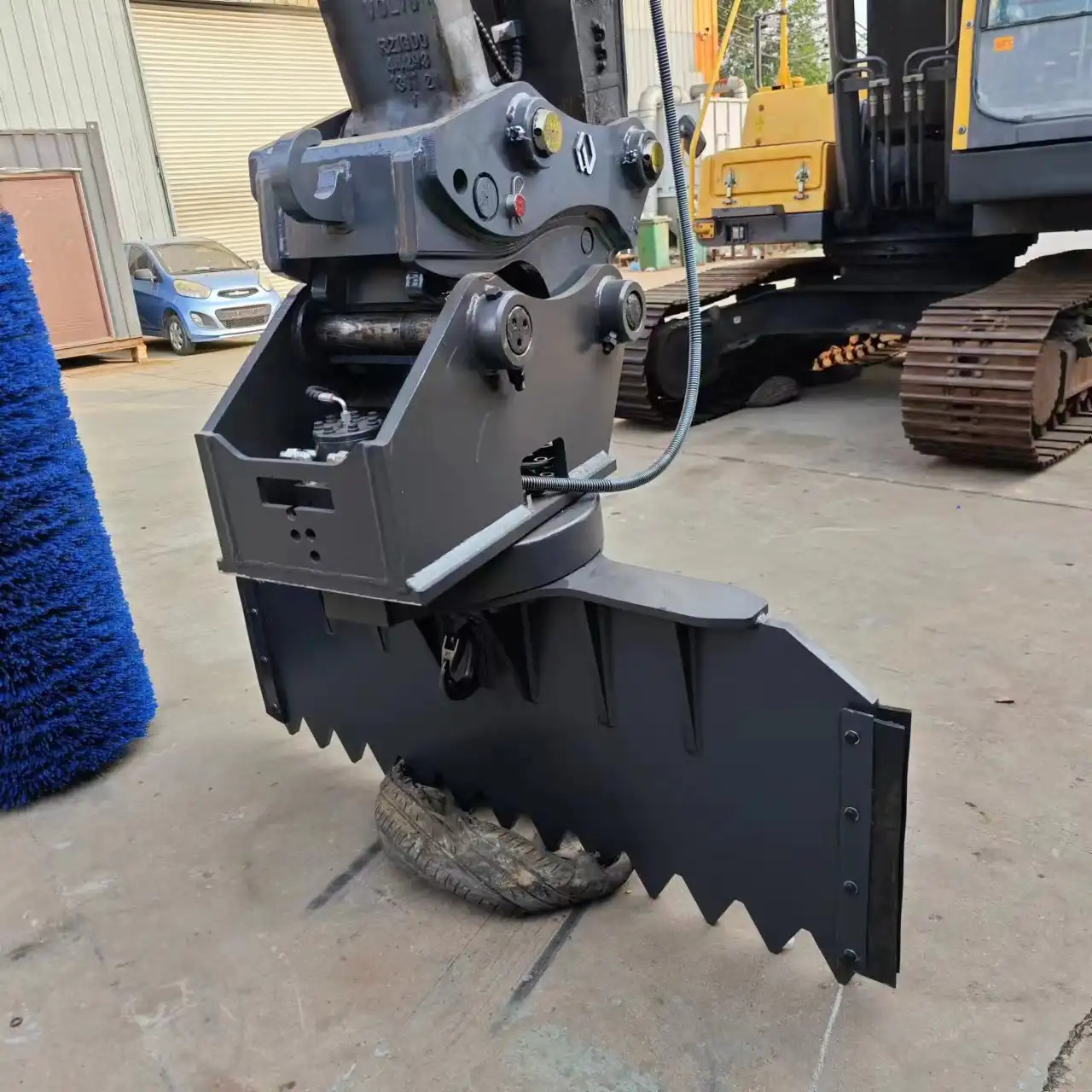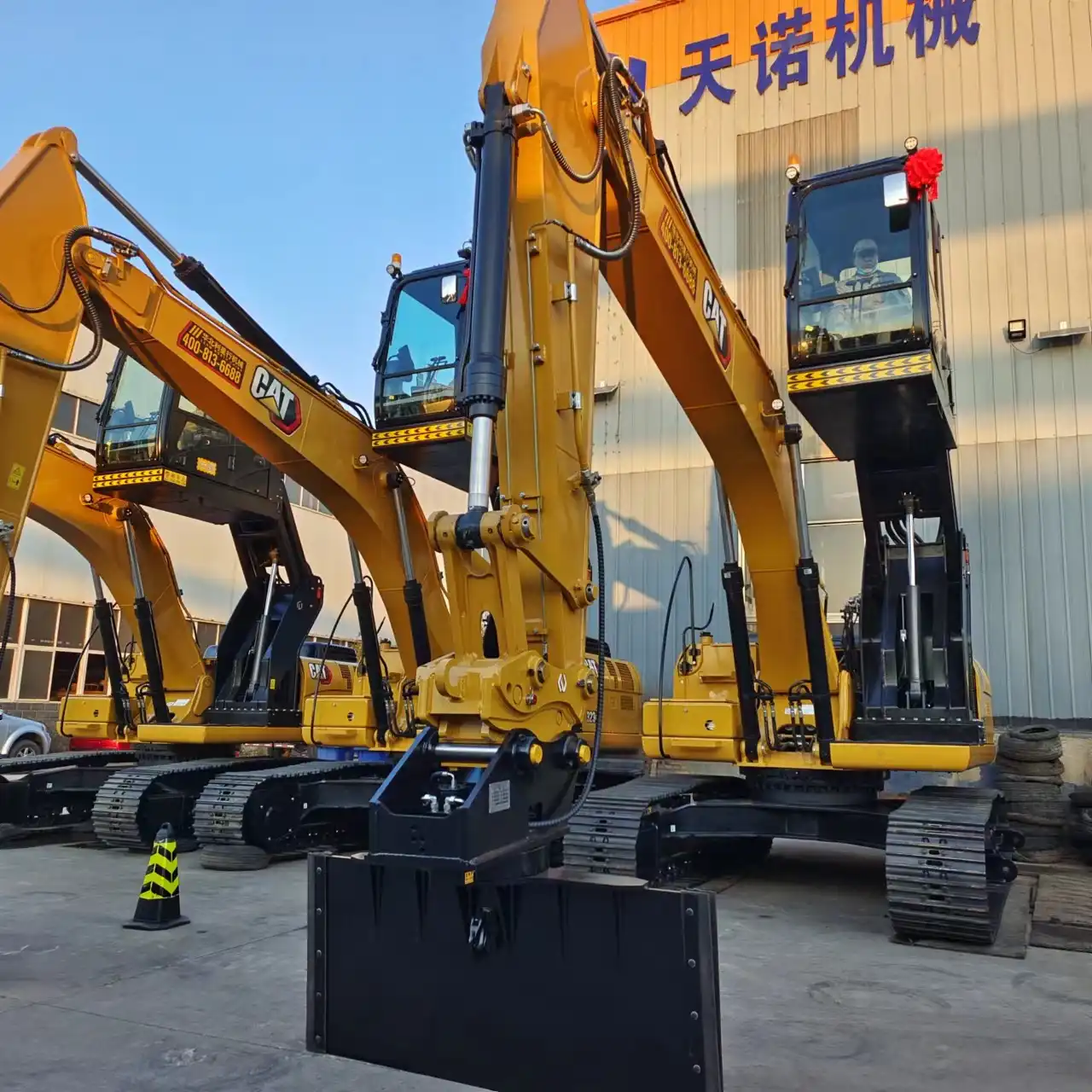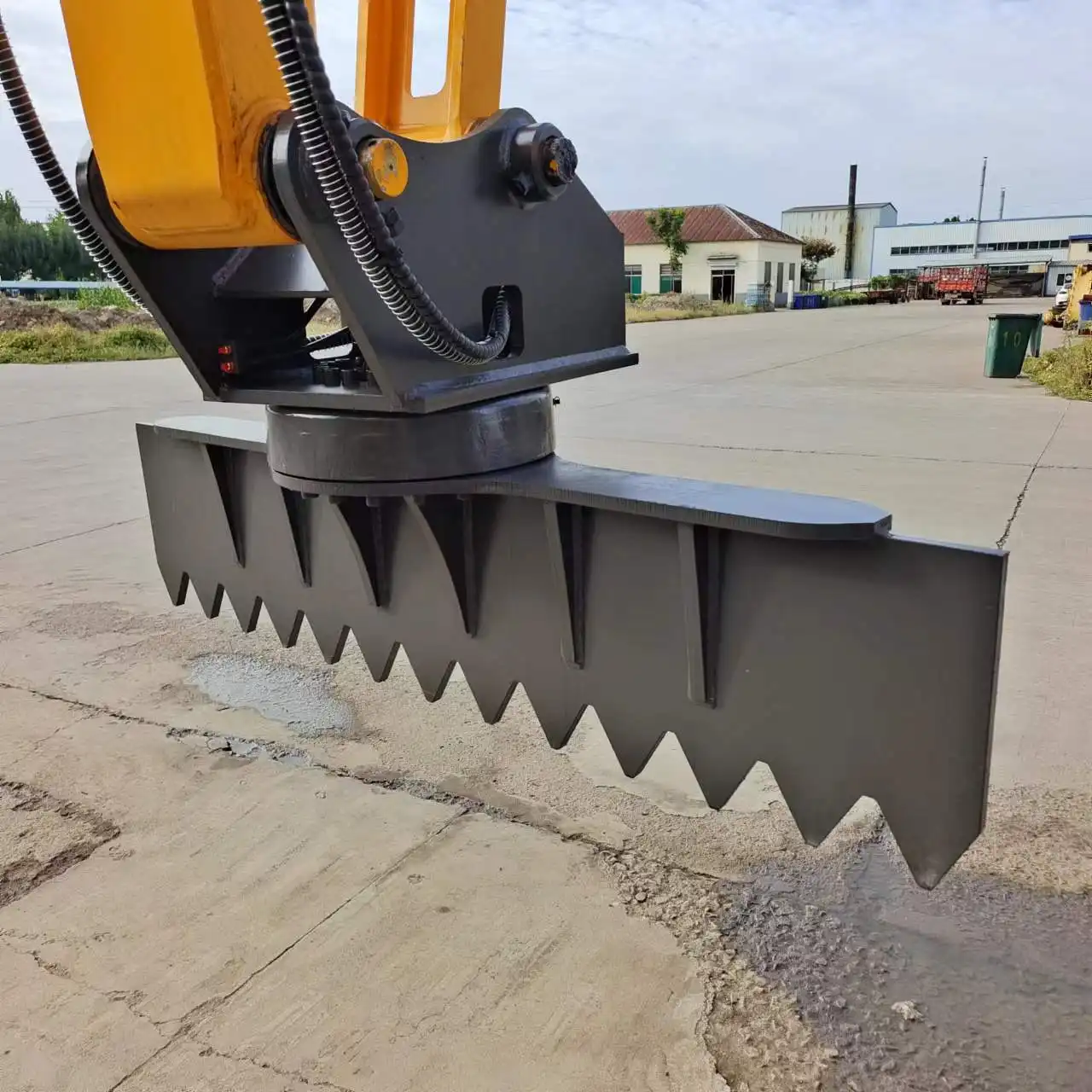What size excavator is compatible with a rotating scraper attachment?
When considering an excavator rotating scraper for your construction, mining, or demolition projects, understanding compatibility requirements becomes crucial for operational success. The rotating scraper attachment typically works with excavators ranging from 10 to 50 tons, though this compatibility depends on several technical factors beyond just weight classification. Your excavator needs adequate hydraulic capacity, proper mounting points, and sufficient structural strength to handle the rotational forces generated by these versatile attachments.
The compatibility question isn't just about size matching - it involves understanding your specific operational requirements, terrain conditions, and the materials you'll be handling. Different excavator models within the same weight category may have varying hydraulic specifications, boom configurations, and attachment mounting systems that affect scraper performance. Whether you're working in railway maintenance, construction site preparation, or material handling operations, selecting the right size match ensures optimal productivity and equipment longevity.

10 to 50 Tons
The weight range of 10 to 50 tons represents the sweet spot for excavator rotating scraper compatibility, covering everything from compact excavators used in urban construction to heavy-duty machines deployed in large-scale mining operations. This broad compatibility range allows contractors and operators to standardize their attachment inventory while maintaining flexibility across different project scales.
Compact Excavator Applications (10-20 Tons)
Smaller excavators in the 10 to 20-ton category excel in confined spaces where maneuverability takes precedence over raw power. These machines typically feature hydraulic systems capable of generating 20-25 MPa of pressure, which proves sufficient for rotating scraper operations in landscaping, utility work, and residential construction projects. The reduced weight of compatible scrapers (typically 500-800 kg) maintains the excavator's stability while providing essential scraping functionality.
Urban construction projects particularly benefit from this size combination, as the rotating capability eliminates the need for frequent repositioning in tight spaces. Contractors working on sidewalk preparation, basement excavation, or utility trenching find that compact excavators with rotating scrapers can accomplish tasks that would otherwise require multiple pieces of equipment or extensive manual labor.
Mid-Range Performance (20-35 Tons)
Excavators in the 20 to 35-ton range represent the workhorses of most construction and infrastructure projects. These machines typically generate hydraulic pressures between 25-30 MPa, providing ample power for continuous scraper operation while maintaining fuel efficiency. The increased structural capacity allows for larger scraper attachments with blade widths extending up to 2000mm, significantly improving productivity in medium-scale operations.
Railway maintenance crews often prefer this size category because it balances power requirements with transportation logistics. The excavators can be easily moved between job sites while providing sufficient capability for track bed preparation, ballast management, and right-of-way maintenance. The rotating scraper's 360-degree functionality becomes particularly valuable when working around existing infrastructure where precise material placement is essential.
Heavy-Duty Operations (35-50 Tons)
Large excavators in the 35 to 50-ton category deliver maximum performance for demanding applications in mining, large construction projects, and industrial demolition. These machines generate hydraulic pressures up to 30 MPa while providing the structural stability necessary for handling the largest rotating scraper configurations (up to 1500 kg). The enhanced lifting capacity and reach make them ideal for material handling operations in ports, quarries, and major infrastructure projects.
Mining operations particularly benefit from this size combination, as the heavy-duty construction withstands the abrasive conditions common in extractive industries. The ability to rotate the scraper blade allows operators to manage various materials efficiently, from overburden removal to precise grading operations, without repositioning the entire machine.

Hydraulic Requirements
Understanding hydraulic specifications is fundamental to successful excavator rotating scraper integration, as these systems power both the attachment's rotation mechanism and its operational functions. Modern rotating scrapers require dedicated auxiliary hydraulic circuits that can deliver consistent pressure and flow rates throughout the full 360-degree rotation cycle.
Pressure and Flow Specifications
Most rotating scrapers operate optimally within hydraulic pressure ranges of 20-30 MPa, though specific requirements vary based on attachment size and intended applications. The hydraulic motor driving the rotation mechanism typically requires flow rates between 40-80 liters per minute, depending on the desired rotation speed and operational loads. Excavators must provide these specifications through their auxiliary hydraulic circuits without compromising primary boom, arm, and bucket functions.
Flow rate consistency becomes particularly important during continuous operation, as variations can affect rotation smoothness and overall attachment performance. Operators working in logistics and material handling applications often require precise control over rotation speed, making steady hydraulic supply essential for maintaining productivity and preventing material spillage or damage.
Auxiliary Circuit Integration
Successful integration requires excavators equipped with dedicated auxiliary hydraulic circuits, typically accessed through quick-connect couplers mounted near the boom or cab area. These circuits must provide both supply and return lines, with some rotating scrapers requiring additional pilot control lines for precise operation. The electrical connections for rotation control usually integrate with the excavator's existing joystick systems, allowing operators to control scraper rotation using familiar hand movements.
Advanced rotating scrapers incorporate proportional control systems that allow variable rotation speeds based on joystick input intensity. This capability proves particularly valuable in precision applications like railway track maintenance, where controlled material placement requires gradual rotation movements rather than full-speed operation.
System Compatibility Considerations
Different excavator manufacturers utilize varying hydraulic system configurations, making compatibility verification essential before attachment purchase. Some machines provide multiple auxiliary circuits with different pressure and flow characteristics, while others may require hydraulic system modifications to accommodate rotating attachments. Consulting with both excavator and attachment manufacturers ensures proper system matching and prevents costly compatibility issues.
Hydraulic filtration requirements also merit consideration, as rotating scrapers introduce additional components that can generate contamination. Regular hydraulic fluid analysis and filter maintenance become more critical when operating rotating attachments, particularly in dusty or abrasive environments common in construction and mining applications.

Customization Options
Customization capabilities allow rotating scraper attachments to meet specific operational requirements across diverse industries, from specialized railway maintenance applications to unique material handling challenges in ports and logistics facilities. Understanding available customization options helps buyers optimize their equipment investment for maximum operational efficiency.
Blade Configuration Adaptations
Blade design represents the most visible customization aspect, with options ranging from straight cutting edges for general excavation to specialized profiles for specific materials. Curved blades excel in loose material handling, while reinforced straight blades provide superior performance in rocky or abrasive conditions. Some applications require perforated blades for drainage operations or specialized edge treatments for working with particular soil types.
Width customization allows matching the scraper to specific excavator capabilities and operational requirements. Narrow blades (1200-1500mm) suit compact excavators and confined space operations, while wider configurations (2000-2500mm) maximize productivity on larger machines working in open areas. The blade angle can also be customized to optimize material flow characteristics for specific applications.
Mounting System Variations
Different excavator brands utilize varying quick-coupler systems and mounting configurations, necessitating customized mounting brackets and hydraulic connections. Universal mounting systems provide flexibility for contractors operating mixed equipment fleets, while brand-specific designs optimize integration with particular excavator models. Some customization options include reinforced mounting points for heavy-duty applications or specialized brackets for machines with non-standard boom configurations.
The rotating mechanism itself can be customized for specific operational requirements, with options including different rotation speeds, torque specifications, and control system integration levels. High-torque configurations suit applications requiring precise positioning under load, while high-speed rotation systems optimize productivity in material sorting and placement operations.
Application-Specific Modifications
Specialized industries often require unique modifications to standard rotating scraper designs. Railway maintenance applications may need specialized edge profiles for ballast management, while demolition operations might require reinforced construction for handling concrete debris. Mining applications often specify additional wear protection and dust sealing to extend operational life in harsh environments.
Some customization options address specific safety requirements, such as enhanced visibility markings for operations near active railways or additional protection systems for working around overhead power lines. These modifications ensure compliance with industry-specific safety regulations while maintaining operational efficiency.
FAQ
What factors determine excavator compatibility beyond weight?
Compatibility depends on hydraulic capacity, auxiliary circuit availability, mounting system configuration, and structural strength. Your excavator must provide adequate hydraulic pressure (20-30 MPa) and flow rates while having proper quick-coupler systems for attachment mounting.
Can smaller excavators handle rotating scrapers effectively?
Yes, excavators in the 10-20 ton range work well with appropriately sized rotating scrapers. The key is matching the attachment weight and hydraulic requirements to the machine's capabilities while maintaining operational stability.
How does rotation affect excavator stability?
Proper scraper sizing maintains excavator stability during rotation. The attachment's weight distribution and rotation mechanism are engineered to work within the excavator's stability envelope when properly matched to machine specifications.
What maintenance considerations apply to rotating scrapers?
Regular maintenance includes checking hydraulic connections, inspecting rotation mechanism lubrication, and monitoring blade wear. The rotating components require periodic greasing and hydraulic fluid quality maintenance to ensure reliable operation.
Are there industry-specific compatibility requirements?
Different industries may have specific requirements for safety features, blade configurations, or control systems. Railway applications often need specialized safety equipment, while mining operations may require enhanced wear protection and dust sealing.
Selecting the appropriate excavator rotating scraper involves careful consideration of your equipment capabilities, operational requirements, and project-specific needs. The 10 to 50-ton compatibility range provides extensive flexibility for most applications, while hydraulic requirements and customization options ensure optimal performance across diverse industries. Whether you're involved in construction, mining, railway maintenance, or logistics operations, understanding these compatibility factors helps maximize your equipment investment and operational efficiency.
Tiannuo's excavator rotating scraper offers comprehensive compatibility with excavators from 10-50 tons, featuring 360-degree rotation capability and high-strength steel construction. With blade widths ranging from 1200-2500mm and customization options available, these attachments provide the versatility and durability needed for demanding applications. The maximum operating pressure of 30 MPa ensures reliable performance across the full weight range, while the 500-1500 kg weight options maintain excavator stability during operation.
Ready to enhance your excavator's capabilities with a rotating scraper attachment? Contact our technical team to discuss your specific requirements and explore customization options that match your operational needs. For detailed specifications and compatibility consultation, reach out to us at rich@stnd-machinery.com and discover how the right rotating scraper can transform your material handling efficiency.
References
- Johnson, M. & Smith, R. (2023). "Hydraulic Attachment Compatibility in Modern Excavator Systems." Journal of Construction Equipment Engineering, 45(3), 78-92.
- Anderson, K. (2022). "Optimization of Rotating Attachments for Heavy Equipment Applications." International Mining and Construction Review, 18(7), 134-148.
- Thompson, D. et al. (2024). "Safety and Efficiency Standards for Excavator Attachment Systems in Railway Maintenance." Transportation Infrastructure Quarterly, 31(2), 56-71.
- Williams, P. & Chen, L. (2023). "Hydraulic System Requirements for 360-Degree Rotating Construction Attachments." Heavy Equipment Technology Annual, 29, 203-217.
- Rodriguez, C. (2022). "Customization Strategies for Excavator Attachments in Specialized Industrial Applications." Construction Machinery International, 67(11), 89-104.
About Author: Arm
Arm is a leading expert in the field of specialized construction and railway maintenance equipment, working at Tiannuo Company. Tiannuo specializes in manufacturing a wide range of products, including railway maintenance equipment like railway sleeper changing machines and screening machines, excavator modification equipment such as excavator lifting cabs, various engineering arms for excavators, excavator accessories like digging buckets, and engineering vehicle auxiliary equipment like loader buckets.

